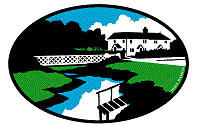

Curdridge Curbridge
I have often wondered whether the two Curs in our parish[1] are the same or different. That is, are they of same etymological origin, or are they just an historical coincidence ?
The first thing I noticed when I began to explore this mystery is that the first edition of the Ordnance Survey 1 inch map of South Hampshire solved the problem by deciding that they were one and the same. According to the map there is no such place as Curdridge. Everything is labelled Curbridge – not only Curbridge itself, but also Curbridge Common (the fields from the top of Station Hill to Lockhams Road, Curdridge Lane and The Plantation) and Curbridge House (now Kitnocks House at the top of Kitnocks Hill). They should, of course, be Curdridge Common and Curdridge House. Either the surveyors got confused or maybe someone in the office decided that the surveyors had made a spelling mistake. Fortunately, this was all corrected in later editions.
The next thing I did was e-mail my friend, and local historian, David Chun. He has written a fine book on the history of the River Hamble and its surrounds so I thought I’d ask what he knew about Curdridge and Curbridge. He advised me that he had read that ‘place name interpretation is complex, and not something that an amateur should dabble in!’
However, he also referred me to ‘The Place-Names of Hampshire’ by Richard Coates (1989). He then pointed out that there was a copy available on Amazon for 79p. I bought it at once. The postage was a good bit more of course, but still, it was a good purchase: it answered my question.
Curdridge originates from an Anglo-Saxon name meaning Cuthred’s ridge. In other words, some chap called Cuthred ‘owned’ or had otherwise been granted possession of what we now know as the village of Curdridge, which lies – largely – on a ridge.
Curbridge, meanwhile, was variously known – or at least spelt –as Kernebrugge, Kerebrigge, Kernebregge and Cornebrigge. These names – or spellings – do not obviously have any connection to our man Cuthred. The common cur component in the two village names is, it would seem, a coincidence.
But then there is another mystery. Mr Coates is not at all sure what the meaning of Curbridgde’s Kerne, etc, might in fact be. He is convinced on historical-linguistic grounds that it comes from the Anglo-Saxon for quern – that is, the lower stone of a hand-driven grinding mill, once a common domestic item. He is then understandably unconvinced that anyone would try to build a bridge over a river with a collection of quern-stones. It is, he says, a question he prefers to leave open.
One possibility, of course, is that kern does not refer to – or describe – the bridge, but was, as it is now, the name of the river. But then why would you name a river after a grinding stone ?
My reluctant conclusion is that what David said is right and that this is not the sort of thing an amateur should dabble in.
Kevan Bundell
-
The Parish is Curdridge, of which Curbridge is a hamlet. ↑